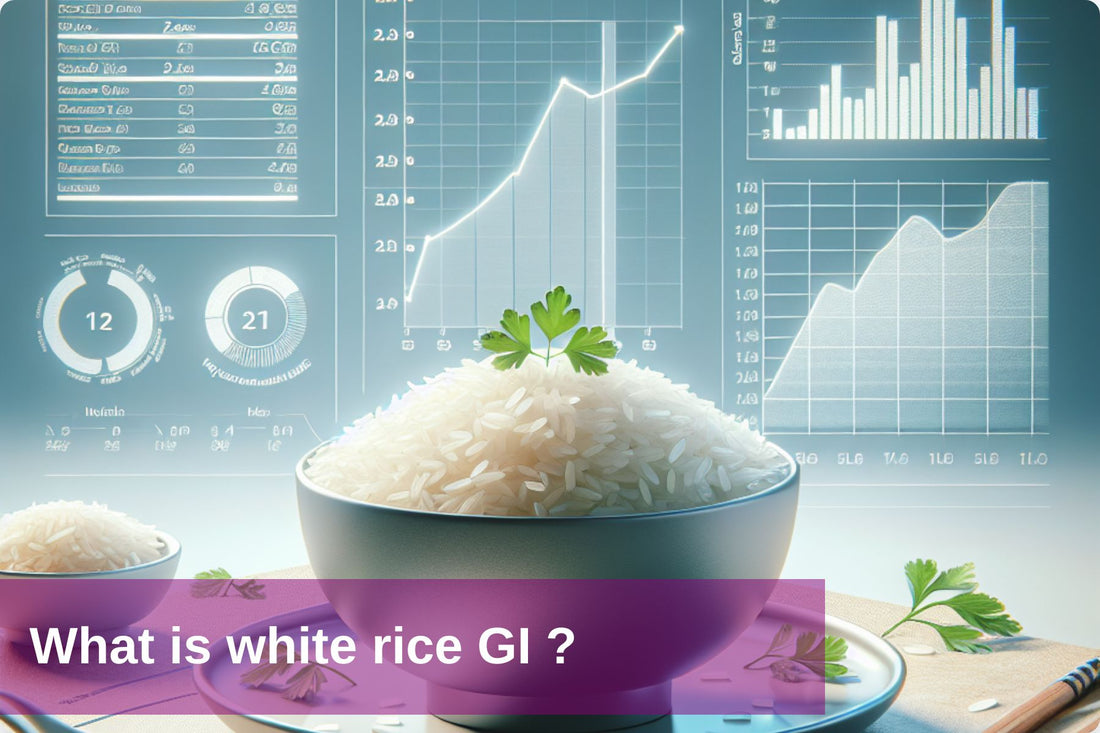Glycemic Index (GI) has become a buzzword in the realm of nutrition and health. Understanding the GI of various foods is crucial, especially for those keen on maintaining a balanced diet. Among the numerous food items analyzed for their GI, white rice stands out due to its popularity and staple status in many diets worldwide. This article aims to shed light on the GI of white rice, its implications for health, and how it fits into a mindful eating plan. Whether you are a health enthusiast or someone simply curious about dietary choices, this exploration into the GI of white rice will provide valuable insights.
Understanding Glycemic Index (GI)
The Glycemic Index is a crucial concept in nutrition, offering a scientific way to measure how quickly carbohydrates in food impact blood sugar levels. Essentially, GI ranks food on a scale from 0 to 100 based on how significantly they raise blood glucose. Foods with a high GI are digested and absorbed rapidly, causing a sharp increase in blood sugar, while those with a low GI have a slower, more gradual impact.
This index is particularly important for individuals managing conditions like diabetes, where blood sugar control is vital. However, it's also beneficial for the general population, aiding in healthier food choices that promote stable energy levels and prevent chronic health issues.
Understanding the GI of common foods like white rice can guide us in making informed dietary decisions, impacting overall health and well-being.
The GI of White Rice
White rice, a staple in many diets worldwide, has a Glycemic Index that typically ranges from medium to high. The exact GI value can vary, typically falling between 60 and 90. This variation largely depends on the type of rice and its processing. For example, short-grain white rice generally has a higher GI than long-grain varieties.
The preparation method also plays a crucial role. Cooking rice until it's softer increases its GI, whereas firmer, less-cooked rice tends to have a lower GI. Additionally, cooling cooked rice can slightly reduce its GI due to the formation of resistant starch.
In comparison to other grains like quinoa or whole wheat, which generally have lower GI values, white rice stands out for its higher glycemic impact. This is significant for individuals who need to monitor their blood sugar levels or are conscious about maintaining steady energy throughout the day.
Type of Rice |
Glycemic Index (GI) |
|---|---|
White Rice (short-grain) |
72-98 |
White Rice (long-grain) |
56-69 |
Jasmine Rice |
68-80 |
50-58 |
|
48-62 |
|
Wild Rice |
45-53 |
Nutritional Chart of White Rice
White rice, while often critiqued for its high glycemic index, does contain a variety of nutrients. The table below outlines the key nutritional components per 100 grams of cooked white rice:
Nutrient |
Amount |
Energy |
130 kcal |
Carbohydrates |
28.2 g |
Sugars |
0.05 g |
Dietary Fiber |
0.4 g |
Protein |
2.7 g |
Fat |
0.28 g |
Sodium |
1 mg |
Potassium |
35 mg |
Source: USDA FoodData Central
White rice is primarily a source of carbohydrates, with a minimal amount of dietary fiber. It's low in fat and has a modest protein content. While it's not a significant source of vitamins and minerals, it can contribute to energy needs, especially in diets where grain is a staple.
Impact of White Rice's GI on Health
Blood Sugar Spikes: White rice has a high GI, typically around 60-90, which means it can cause rapid spikes in blood sugar levels. Consuming high-GI foods leads to a quick release of glucose into the bloodstream, followed by a rapid insulin response. This can result in a sudden drop in blood sugar levels, potentially causing hunger and cravings for more high-GI foods.
Insulin Resistance and Type 2 Diabetes: Regular consumption of high-GI foods like white rice can contribute to insulin resistance. Over time, the body becomes less responsive to insulin, increasing the risk of developing type 2 diabetes. Managing GI in the diet is crucial for individuals with prediabetes or diabetes to maintain stable blood sugar levels.
Weight Management: High-GI foods can lead to increased appetite and overeating due to the rapid fluctuations in blood sugar and insulin levels. This can contribute to weight gain and obesity, which are risk factors for numerous health conditions, including cardiovascular disease and type 2 diabetes.
Cardiovascular Health: Frequent spikes in blood sugar and insulin can lead to chronic inflammation, a risk factor for cardiovascular diseases. Moreover, insulin resistance, often associated with high-GI diets, is linked to an increased risk of hypertension and other heart-related issues.
Energy Levels: High-GI foods can provide a quick burst of energy followed by a rapid decline, leading to feelings of fatigue and reduced energy levels. This can affect daily performance and overall well-being.
Nutritional Deficiency: White rice is often consumed in place of more nutrient-dense whole grains. Relying heavily on white rice can result in a lack of essential nutrients, such as fiber, vitamins, and minerals, which are important for overall health.
In moderation, white rice can be part of a balanced diet, but understanding its GI and potential health effects is key to making informed dietary choices.
How to Balance White Rice in a Healthy Diet
Despite its high glycemic index, white rice can be part of a balanced and healthy diet with some mindful eating strategies:
Portion Control: Limiting the serving size of white rice can help manage its impact on blood sugar levels. Opting for smaller portions can be an effective way to enjoy white rice without overindulging in high-GI carbohydrates.
Pairing with Low-GI Foods: Combining white rice with low-GI foods like leafy greens, lean proteins, or healthy fats can help balance the meal's overall glycemic impact. This pairing not only stabilizes blood sugar levels but also enhances the nutritional value of the meal.
Including Fiber-Rich Foods: Adding fiber-rich vegetables or beans to a rice dish can lower the overall GI of the meal and provide additional health benefits. Fiber slows down the digestion and absorption of carbohydrates, mitigating rapid spikes in blood sugar.
Choosing Whole Grain Alternatives: Occasionally substituting white rice with lower GI alternatives like brown rice, quinoa, or bulgur can contribute to a more balanced diet. These whole grains offer additional nutrients and fiber, helping to maintain steady blood sugar levels.
Cooking Method Adjustments: Cooking rice to be firmer rather than softer can slightly reduce its GI. Also, cooling cooked rice before reheating can increase its resistant starch content, further lowering the GI.
By incorporating these strategies, individuals can enjoy white rice while still maintaining a diet that supports overall health and well-being.
Our verdict on White Rice
Understanding the glycemic index of white rice is crucial for making informed dietary choices, especially for those focused on health and wellness. While white rice has a medium to high GI, making it potentially challenging for blood sugar management, it can still be part of a balanced diet when consumed mindfully. By practicing portion control, combining it with low-GI foods, and incorporating whole grains and fiber-rich options, the impact of white rice on blood sugar can be moderated.
Remember, the key to a healthy diet is balance and variety. White rice, when eaten in moderation and as part of a diverse diet, can contribute to a nutritious and enjoyable eating plan. Being aware of the GI of foods like white rice empowers us to make choices that support our health goals and lifestyle.
References
- A good guide to good carbs: The glycemic index - Harvard Health
- Effect of cooling of cooked white rice on resistant starch content and ...
- Glycemic Index of Wheat and Rice are Similar When Consumed as ...
- The effect of a brown-rice diets on glycemic control and metabolic ...
- Low-glycemic index diet: What's behind the claims? - Mayo Clinic
This Blog post is an initiative by DiabeSmart, to provide accurate and Nutritionist / Doctor approved information related to Diabetes. DiabeSmart is India's first Food brand designed specifically for Diabetics, that has been clinically tested on Diabetics and Pre-Diabetics to deliver 55% - 70% lower Sugar spikes. DiabeSmart is part of Lo! Foods - India's leading brand for Everyday Functional Health foods.















